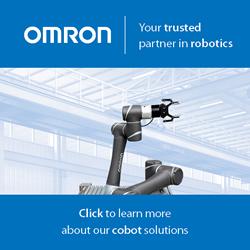IDTechEx See a Great Future for Electric Quadcopters
Professional quadcopters will also profit from the fact that over one million Arduino boards have been sold in a very short time to quadcopter hobbyists and the designers of wearable technology and Internet of Things nodes.
CAMBRIDGE, England----The starting point for Unmanned Aerial Vehicles is rarely military; it is at the other extreme with toy helicopters and predating professional UAV helicopters and so on. Despite the emphasis in the press, it is not all about improvement of batteries.
The IDTechEx report, "Unmanned Aerial Vehicles: Electric UAVs 2014-2024" www.idtechex.com/uav has been tracking some changes lately, none more rapid than the adoption of pure electric quadcopters. As toys, they are a big success but not necessarily an ongoing growth market.
As the sophisticated sensor systems in mobile phones migrate to hobbyists' microcontroller boards, such as the Arduino boards used in their homemade quadcopters, their uses rapidly widen.
Professional quadcopters will also profit from the fact that over one million Arduino boards have been sold in a very short time to quadcopter hobbyists and the designers of wearable technology and Internet of Things nodes. Equivalent boards sold directly out of China are also getting useful volume headed towards billions each year for IoT, driving down quadcopter costs.
Hundreds of millions of dollars are spent on hand-launched, fixed-wing, pure-electric aircraft for military surveillance. Secondly, there has been upper-atmosphere, solar-powered surveillance aircraft attracting huge military research budgets.
By contrast, the last six months has seen many new applications for pure-electric quadcopters. Amazon proposed delivery of mail by quadcopter, others will use them for aircraft inspection, even indoors, and yet others have new agricultural uses. easyJet, one of UK's largest airlines, works with the Bristol Robotics Laboratory to make variants that inspect its 220 airliners. These quadcopters will be programmed to scan and assess easyJet's planes, reporting back to engineers on any damage which may require further inspection or maintenance work. They are currently in development with a view to trialling them in the coming months and introducing them into operation as early as 2015.
Professional quadcopters cost many times the price of toy versions so they may one day become the bigger market and certainly the most profitable and many will form part of the Internet of Things. Advanced military capabilities such as intelligent swarming of small electric craft will also migrate to the civilian sector.
Featured Product

Discover how human-robot collaboration can take flexibility to new heights!
Humans and robots can now share tasks - and this new partnership is on the verge of revolutionizing the production line. Today's drivers like data-driven services, decreasing product lifetimes and the need for product differentiation are putting flexibility paramount, and no technology is better suited to meet these needs than the Omron TM Series Collaborative Robot. With force feedback, collision detection technology and an intuitive, hand-guided teaching mechanism, the TM Series cobot is designed to work in immediate proximity to a human worker and is easier than ever to train on new tasks.
